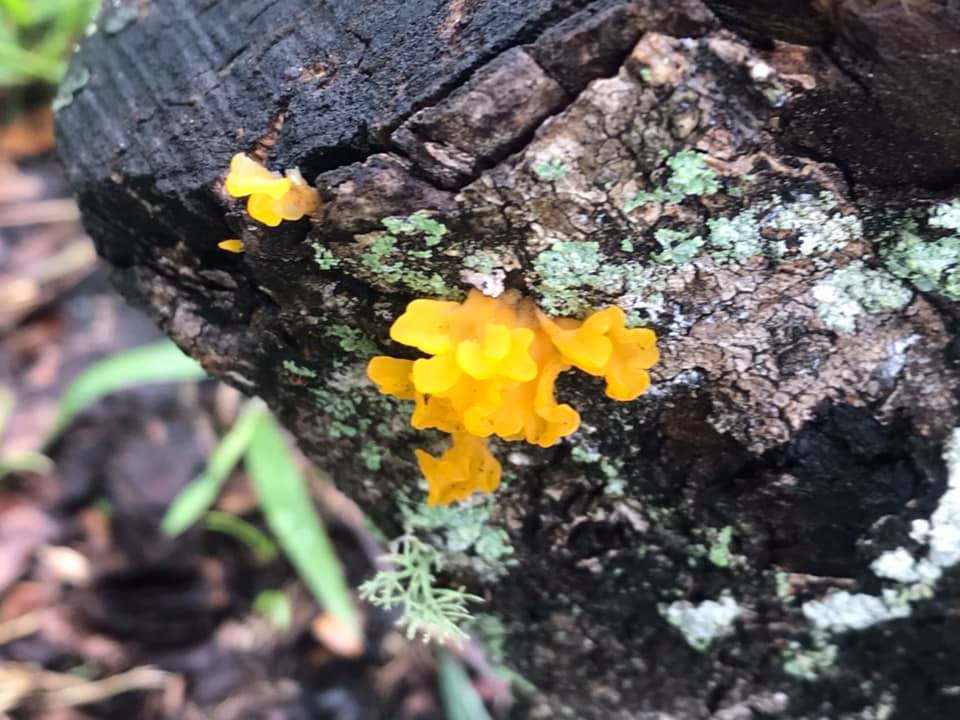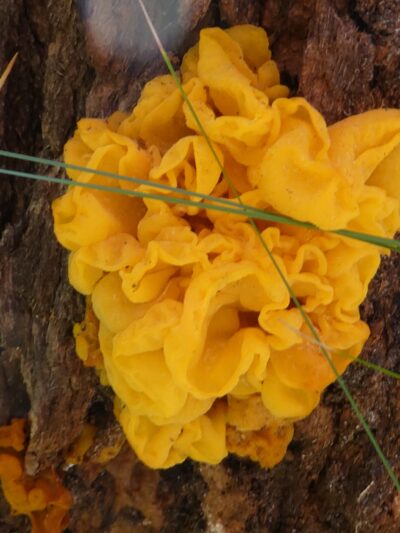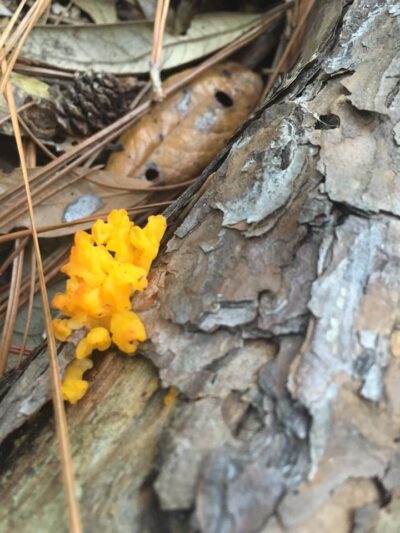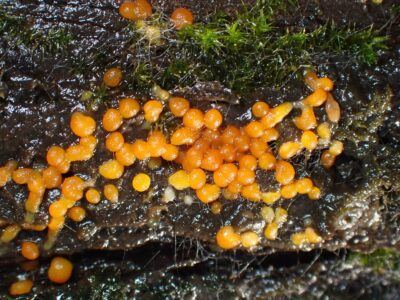

Witch’s butter, scientifically known as Tremella mesenterica, is an intriguing and unusual mushroom commonly found growing on decaying hardwood trees. With its bright yellow, jelly-like appearance, it’s hard to miss. The mushroom’s folklore-inspired name adds to its mystique, drawing curious foragers and nature lovers alike.
In this article, we’ll dive into the identification, ecology, potential uses, and fascinating folklore of Witch’s butter, making it a comprehensive guide for those eager to learn more about this gelatinous gem of the forest.
Witch’s butter is easily recognizable by its bright yellow or orange hue, which appears like glistening jelly. The mushroom typically grows in clusters, often forming irregularly shaped, blob-like structures that resemble melted butter. Its surface is smooth and gelatinous to the touch, and it can feel somewhat slimy when wet. During dry spells, the mushroom can shrivel up and look more shriveled, but it rehydrates after rainfall, returning to its jelly-like form.
This species often grows on dead or dying deciduous trees, particularly oak, beech, and alder, making it common in forests and wooded areas. Despite its odd appearance, Witch’s butter is a type of parasitic fungus that feeds off the mycelium of other wood-decaying fungi, especially those in the genus Peniophora.
Witch’s butter is saprophytic, meaning it breaks down dead organic material, playing a crucial role in forest ecosystems. By decomposing decaying wood, it helps recycle nutrients back into the soil, supporting plant life and other organisms. Its parasitic relationship with Peniophora fungi is essential in nature, as it balances fungal communities and prevents certain species from overwhelming their environment.
This mushroom thrives in temperate regions, including North America, Europe, and parts of Asia. You’ll find it during wet conditions, particularly in the spring and fall. It prefers shaded, humid forests with plenty of decaying wood, which provides the perfect environment for its growth.
Witch’s butter is technically edible, though it lacks much flavor or nutritional value. It’s primarily composed of water, and while safe to consume, it’s often described as bland or tasteless. Some adventurous foragers include it in soups or stir-fries for its interesting texture, likening it to a natural thickener for broths. Due to its jelly-like consistency, it can absorb the flavors of the dishes it’s cooked in.
However, its culinary use remains uncommon, mainly because it lacks the taste appeal of more popular mushrooms like chanterelles or shiitake. But for those curious about wild edibles, adding Witch’s butter to your foraging basket can offer a novel, if not gourmet, experience.
Although not widely studied, Witch’s butter shares some characteristics with other Tremella species that have been explored for their potential health benefits. Some research suggests that related fungi possess immune-boosting and antioxidant properties, though Tremella mesenterica itself has not been the focus of extensive scientific research.
In traditional Chinese medicine, related species like Tremella fuciformis have been used for skin health, hydration, and overall well-being. Whether Witch’s butter shares similar medicinal properties is still a topic for future exploration.
The name “Witch’s butter” is rooted in European folklore. It was believed that the jelly-like substance would appear on doorways or windowsills as a sign that witches had cast a spell. In some legends, it was thought that witches spread this fungus on homes to bring bad luck or misfortune.
In response, people believed that scraping the fungus away or burning it could break the curse. Though these superstitions have faded, the mushroom’s eerie appearance and association with witchcraft continue to capture the imagination of foragers today.
There are a few mushrooms that may resemble Witch’s butter, so careful identification is important:



When identifying mushrooms, always cross-reference multiple sources, and if you’re unsure, avoid consumption until confident in your identification.
While not prized for its taste, Witch’s butter is a rewarding find for foragers due to its unique appearance and texture. Its bright color makes it a striking subject for nature photographers as well. For those interested in mushroom identification or simply enjoying nature’s oddities, discovering Witch’s butter can be a highlight of a forest walk.
Witch’s butter may not be a culinary delight, but it holds its own in the world of fungi. Its bright color, fascinating texture, and role in forest ecology make it a worthy topic for mycologists, foragers, and anyone curious about nature. Next time you’re walking through the woods, keep an eye out for this strange yet beautiful mushroom. You may just uncover a little piece of nature’s magic.